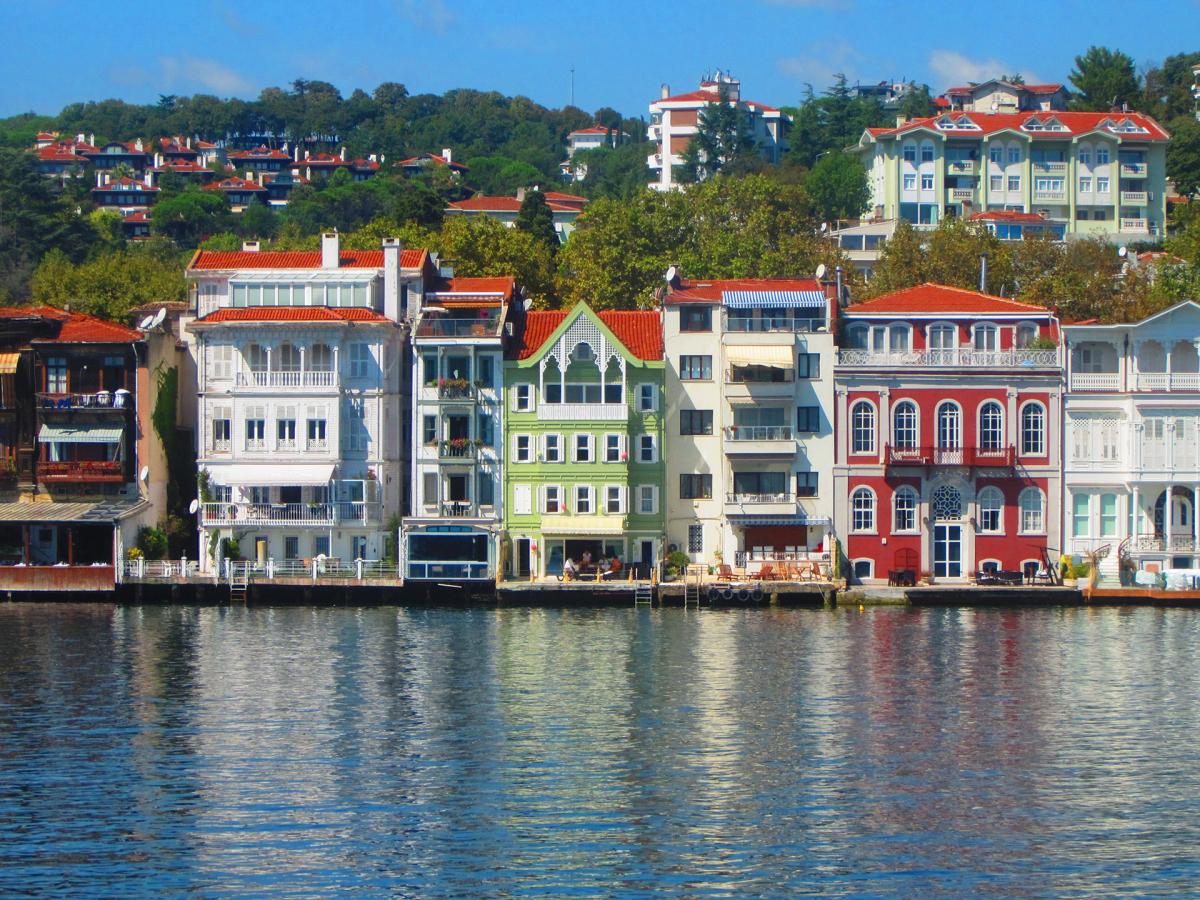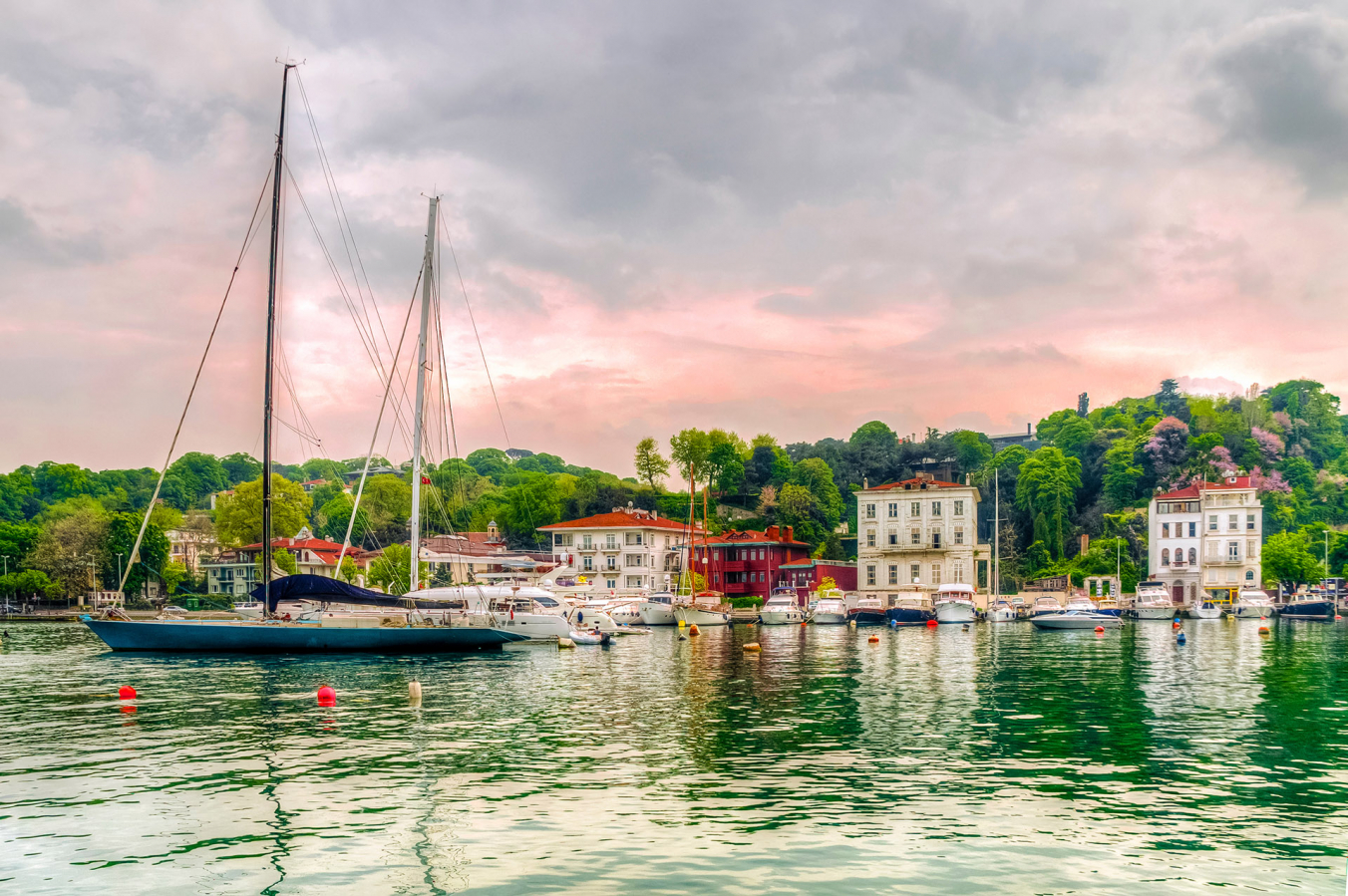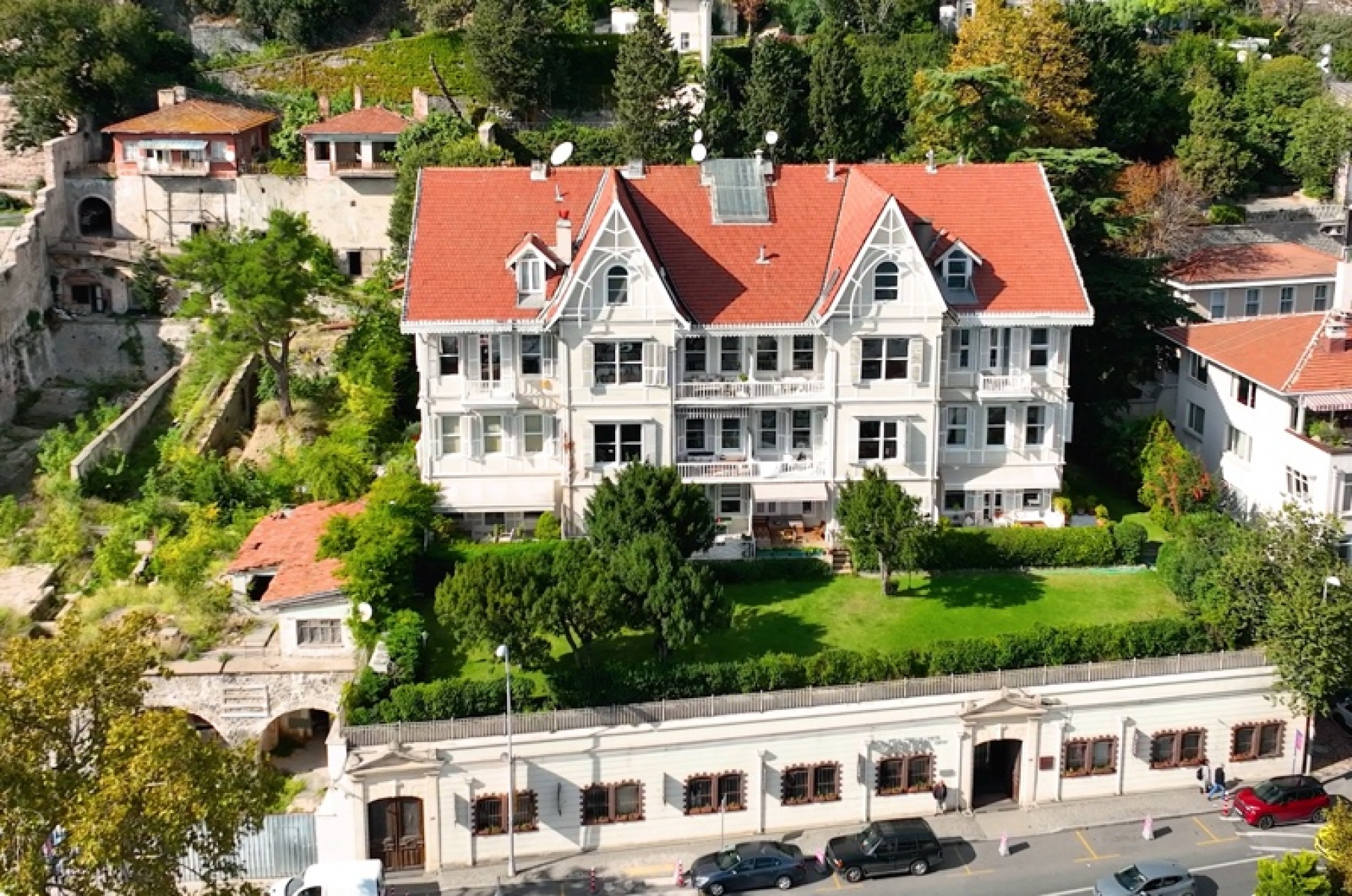
Şehzade Burhanettin Efendi Mansion
Bought for Şehzade Burhanettin Efendi, son of Abdülhamid II, and known as Erbilgin Mansion today, it is one of the largest mansions on the Bosphorus. The mansion, which has the longest dock after the Cyprus Mansion with its 60-meter quay in the most popular spot of Yeniköy, has total use of 3600 m2. The bridge connecting the mansion with the grove behind it was demolished in 1957 due to road expropriation. After Burhanettin Efendi left Istanbul after the First World War, the estate passed to Ahmed İhsan Bey, an Egyptian of Turkish origin. In 1985 it passed to the Erbilgin family. The mansion, which has been in the Erbilgin family for many years, now belongs to a famous businessperson from Qatar. It was ranked 4th in the list of the most expensive houses in the world in the ranking made by Forbes magazine in 2014.
Huber Mansion
The Huber Mansion rises among the lush trees with its flamboyant architecture while passing through the Yeniköy-Tarabya road. The mansion, which maintains its feature as one of the largest green areas of the Bosphorus with its 34-hectare grove, draws attention to its history and architecture built in the “Art Nouveau” style. Although there is no clear information about the architecture and the year of construction, it was built in the 19th century by the famous architect Raimondo D'Aronco, who designed many mansions at the end of the 20th century. It is thought to have been made at the beginning. The mansion, built by the arms broker Huber brothers, who represented the German Mauser and Krupp companies, is still known by the same name today. After the Huber brothers returned to their country with the proclamation of the second constitutional monarchy, the mansion changed hands several times; In 1985, it was expropriated and started to be used as the Presidential Summer Mansion.
Edib Efendi Mansion
Edib Efendi Mansion, one of the largest mansions on the Bosphorus and one of the longest fronted mansions in its region (39 meters), was named after Edib İbrahim Efendi, who held important positions such as Minister of Finance and Defter-i Hakani in the Ottoman Empire. 19th century One of the essential features of the mansion, which was built in the style of traditional Bosphorus mansions at the beginning and consisted of two sections, is one of the critical features of the harem section in Vaniköy and the Selamlık section in Kandilli, which survived the fire that destroyed all the mansions, stands in all its splendour on Akıntıburnu on the Anatolian side. Since it is located at a point where the Bosphorus currents are powerful, a gap called 'Yedekçi' right has been left in front of the mansion. In the Ottoman Empire, towed boats and boats that could not resist the current were towed by rope and received a fee in return.
Recaizade Mahmut Ekrem Mansion
The mansion, which is the first mansion on the coast of Yeniköy and named after one of its famous writers during the Indemnity period, Recaizade Mahmut Ekrem, has an important place in the history of literature. The mansion, which the author made the headquarters of the Servet-i Fünun school, dates back to the 20th century. In the beginning, it became known as the "Writers Mansion" and hosted famous writers such as Tevfik Fikret and Halit Ziya Uşaklıgil. Sultan II. During the reign of Abdülhamit, the writer, who had to sell the mansion, settled in Cihangir after the allegations that he had communicated with Hıdiv Abbas Hilmi Pasha from the pier of the mansion in Çubuklu. It consists of four buildings: the mansion, the Selamlık, the harem and the outbuilding.
Amcazade Hüseyin Pasha Mansion
A 300-year-old example of Istanbul's old civil architecture. The mansion, also known as Köprülü Mansion, was built in Anadolu Hisarı in 1699 and is the oldest known residence in Istanbul. It was built for Amcazade Hüseyin Pasha from the Köprülü family. By the tradition of Ottoman statesmen's mansions being “Aşı” colour, it draws attention with its graft colour. The drafts of the Pasarofca and Karlowitz Agreements, which were of great importance in Ottoman history, were prepared here. During the Russian War of 1893, the mansion was destroyed due to the settlement of immigrants here, and it was also built in the 19th century. Only the Divan House of the Selamlık section remained.
Mabeyinci Faik Bey Mansion
Built-in 1890 by Mabeyinci Faik Bey in Beylerbeyi, the mansion is imposing with its two towers with green cones at both ends and makes a difference in Ottoman architecture. Mabeyinci Faik Bey, who worked in Yıldız Palace and the Ministry of Foreign Affairs during the reign of Sultan Abdülhamid II, did not conform to the fashion of his time because he admired the mansions of the Sultan Abdülaziz period and had the interior of the mansion built according to the old Ottoman taste. Literary conversations and chapters were held in Faik Bey's mansion in Beylerbeyi, a graduate of Galatasaray High School and closely interested in art and literature. Mabeyinci Faik Bey Mansion was also used in the shooting of the cult movie Topkapı (1964).















